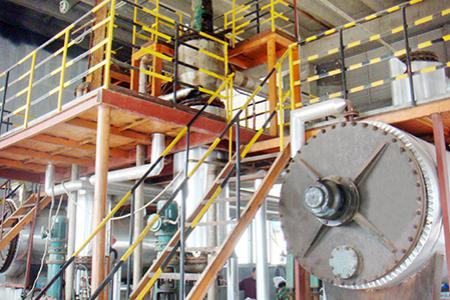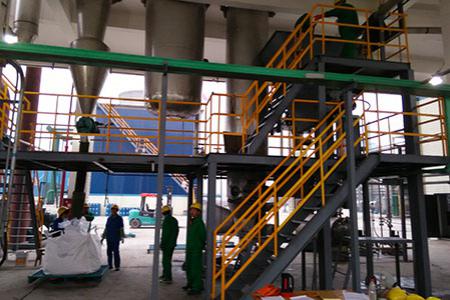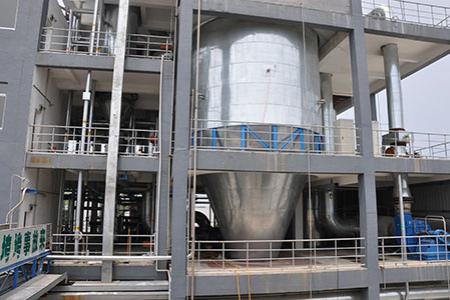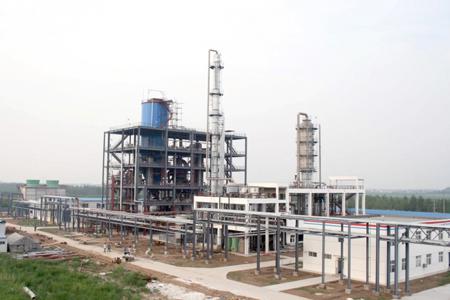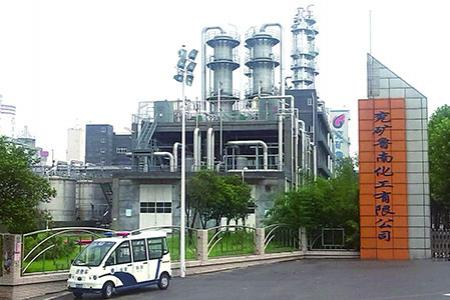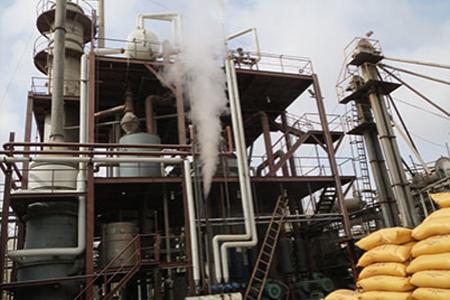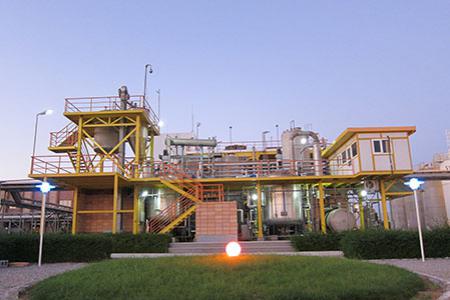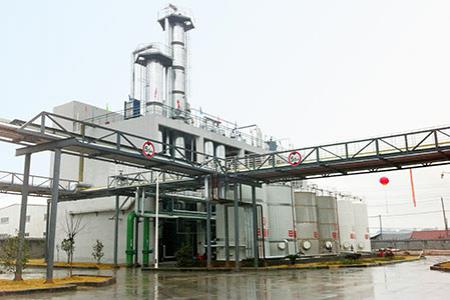- Home
- Technology & Plants
The purity and productivity of chemicals is often tied directly to the equipment and processes used in production. Helipont provides clients in the chemical industry with production technologies and equipment specially designed to optimize formaldehyde and formaldehyde derivatives production. We have been dedicated to the design and improvement of this application since 1989 and have accumulated significant experience. We can provide you with the following solutions.
Helipont provides engineering, procurement, and construction (EPC) for chemical industrial factories processing formaldehyde and formaldehyde derivatives. As a technology-oriented company, we offer design and improvement services for production processes, as well as consultation and evaluation for production projects, technical services, and project management.
-
 Plant Revamping
Plant Revamping -
 Consultation & Evaluation
Consultation & Evaluation -
 Engineering Design & Technology
Engineering Design & Technology -
 Project Management
Project Management -
 Supervision Service
Supervision Service
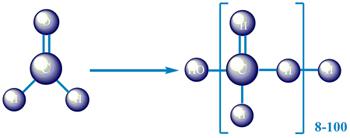
Paraformaldehyde is a product of the dehydration polycondensation reaction of formaldehyde solution, also called dimethoxymethane. There are mainly two types: low polymerization degree paraformaldehyde (degree of polymerization is 2-8), and paraformaldehyde (degree of polymerization is 8-100).
Production Process- Vacuum Drying Process
Firstly, increase the formaldehyde concentration from 37% to 65% through concentrated dehydration, then put it into rake dryers for further dehydration, until when the paraformaldehyde become a solid powder. The entire dehydration process is operated under negative pressure. The evaporating condensate containing 10-15% formaldehyde will return to the formaldehyde section and can be used to produce methylal, urotropine or mixed to 37% formaldehyde for sale. It is a batch form operation. Each batch feed for rake dryers is around 4-5m^3, drying time is 4-6 hours. The production cycle is long, while the production capacity is low, and the product is in the form of powder mixed block.
- Spray Drying Process
Formaldehyde concentration is increased to 80% after second-efficiency condensation under vacuum, and then pumped into the spraying cooling tower. The concentrated formaldehyde solution is sprayed through the nozzle and condensed into a granular paraformaldehyde solid. This process is consequent, the time needed is short, and the product has good solubility because of shorter formed formaldehyde chain.
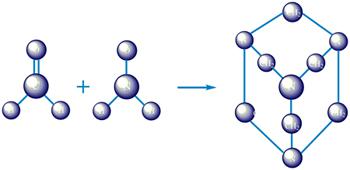
Hexamine’s full name is hexamethylenetetramine, and is also called methenamine, urotropine, 1, 3, 5, 7- tetra azaadamantane, formin, and amino form. The main materials for hexamine production include formaldehyde and ammonium, and are used in two main processes: liquid phase process and gas phase process. Helipont offers both processes alongside engineering, special equipment, and after-sales services.
Production Process- Liquid Phase Process
The liquid phase process is mainly used in exhaust formaldehyde treatment. For example, there is often 15% dilute formaldehyde from the paraformaldehyde production process, and it is difficult to handle and cannot be directly discharged. The liquid phase process reuses the diluted formaldehyde to produce hexamine and improve the overall project economic value.
- Gas Phase Process
The gas phase process has become a primary process due to its low production costs and low steam and ammonium consumption. We usually suggest clients use this process in newly built factories.

Acetaldehyde production includes 3 primary process: acetylene hydration, ethylene oxidation, and alcohol oxidation. Helipont currently utilizes the alcohol oxidation process for the production acetaldehyde, because alcohol features a low costs and a wide usage range. It also features a low conversion rate. We use double towers for absorption- one tower for circulation absorption, and the other for a spraying absorption and recycling plant in order to obtain the best consumption.
Production Process- Mix the alcohol material.
- After removing impurities such as dust via air filter, the outside air enters the evaporator via the roots blower.
- Mixed alcohol and air react in the evaporator and generate acetaldehyde.
- Cool down the acetaldehyde and unreacted alcohol.
- Rectify the acetaldehyde.
UF MF molding powder plants provided by Helipont are used in the production of UF (urea formaldehyde resin) and MF (melamine-formaldehyde resin). We supply our clients with the technical design, product design and equipment installation tests.

Formaldehyde is generated through the dehydrogenation or oxidation of methanol under a metal (such as silver or copper) catalysis process and is obtained by the decomposition of a hydrocarbon oxidation product. It is often used as a pesticide and disinfectant, and is the basic raw chemical material for the production of phenolic resin, urea-formaldehyde resin, vinylon, urotropine, pentaerythritol and dyes. Formaldehyde is widely used in the production of resins, plastics, leather, paper and fiber, and is an important part of everyday life.
Formaldehyde Production Process- Metal Oxide Process
Metal oxide processes are used to produce a high formaldehyde concentration. The catalyst can be used for one year after each regeneration, which lowers costs and makes it a more economical solution.
- Silver Catalyst Process
The formaldehyde solution concentration produced through the silver catalyst process is 37-42%, reaching 55% with an evaporator. The silver catalyst used in this process requires a regeneration every 3 months, which often leads to higher costs. As a solution, Helipont has innovated and improved on the traditional process by replacing multiple evaporators with a multifunctional evaporator. Off gas absorption equipment designed by us ensures off gas meets direct emission standards, and the steam energy can be reused.
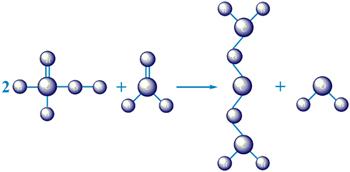
Sulfuric acid used to be commonly used as a catalyst in methylal manufacturing, posing significant corrosion problems. As technology advanced, sulfuric acid catalysts were replaced first by a solid resin, then by a catalytic rectification process, which improved both quality and quantity. However, the catalyst generation still faced problems, and the COD concentration in waste water was higher than 2,000ppm.
Methylal Production Process- 99.5% Concentration Process
We first produce a diluted methylal solution through the use of normal methylal plants, then send 92% methylal to the differential pressure rectification tower for pressure distillation and obtain a high concentration methylal from the bottom of the tower and reflux the overhead fraction to the reactor and rectification tower.
- 85%-92% Concentration Process
The 85%-92% concentration process is a traditional methylal process. Helipont improved on it in order to decrease consumption of methanol and formaldehyde and control COD concentration from the reactor to lower than 200ppm.
UF MUF resin glue plants are used to produce two adhesive types: UF (urea formaldehyde resin) and MUF (melamine modified urea formaldehyde resin). We supply artificial board manufacturers with the one stop services, from technical design and product design, all the way to equipment installation tests.
Production Process of UF MUF Resin Glue Plant- Addition phase.
- First polycondensation.
- Second polycondensation.
This process uses formaldehyde and methylal to synthesize DMMn. The plants provided by Helipont are composed of one set of methanol to formaldehyde plant, one set of methylal plant and one set of DMMn plant. A solid acid catalyst is used throughout the entire plant, giving it a long service life and allows for easy product separation. Using formaldehyde as the raw material can saves money when compared to paraformaldehyde or trioxane. Without the paraformaldehyde device and trioxane device, project costs are also significantly reduced and waste water meets first level emission standards.
Production Process of DMMn- 50% concentration formaldehyde enters the climbing film evaporator to be concentrated to 75%.
- The mixed 75% formaldehyde and methylal react with each other to create DMMn and very little heavy by-product.
- Send Dmmn to purge gas absorption column to be dewatered.
Helipont is a solutions provider, implementing engineering, procurement, and construction (EPC) projects involving formaldehyde and formaldehyde derivative production operations. We focus innovative efforts on two areas: chemical equipment and chemical trade. Our silver catalyst formaldehyde production process and related equipment has been successfully implemented by some of the world’s premier chemical processors, helping them minimize operating costs and handle by-products safely and effectively.
Read More
